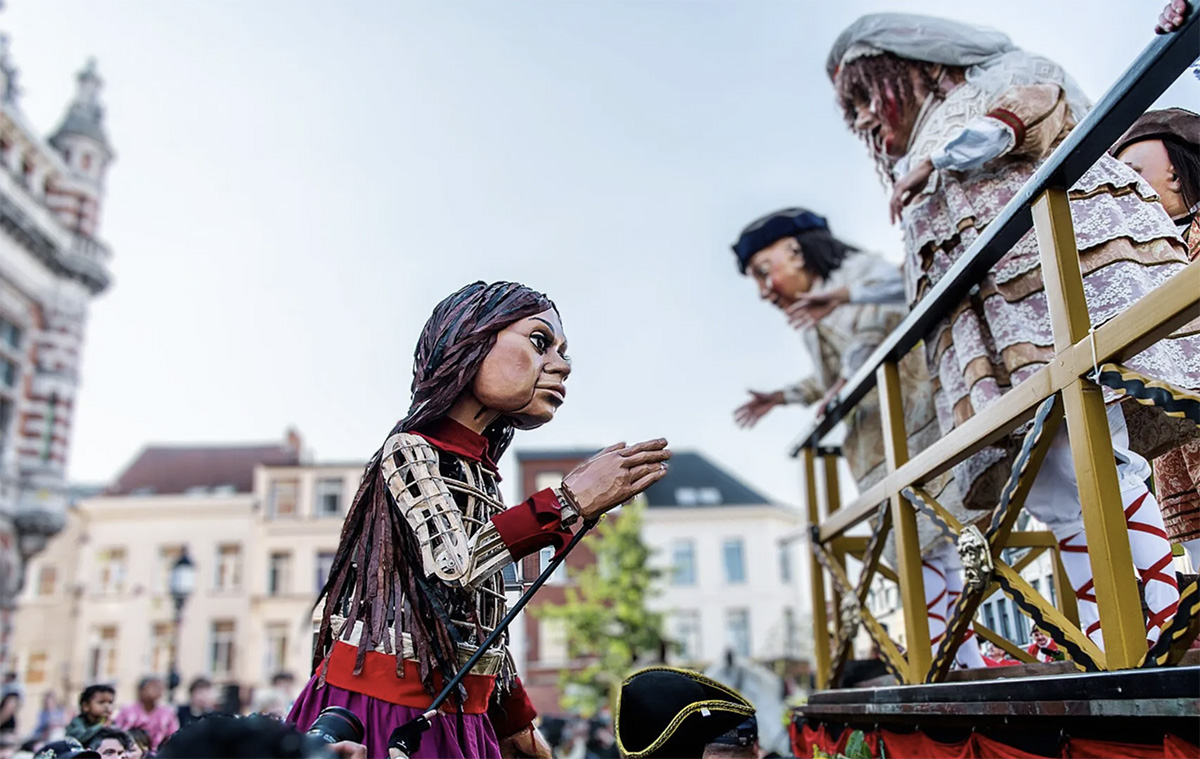Author: Lama Issa
Translator: Bayan Lababidi
Little Amal, a massive puppet of a refugee child, has become a global symbol of hope and resilience. Standing at 3 ½ metres tall, Little Amal represents the spirit of a nine-year-old Syrian refugee embarking on a journey around the world in search of her mother, safety, security, and a place to call home.
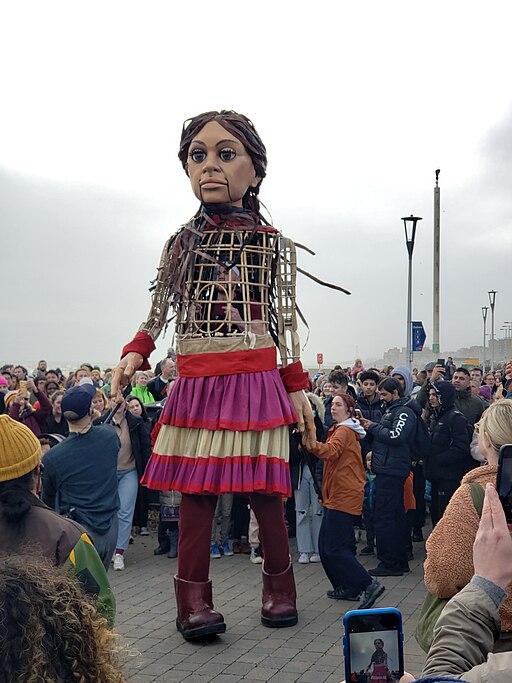
The Little Amal character was first introduced in a play called The Jungle, produced by the theatre company “Good Chance” in 2015. The play took place at the Theatre of Hope dome which is situated in the former Calais Jungle, an unofficial refugee camp near Calais. Palestinian playwright and director, Amir Nizar Zuabi, is the artistic director of the Little Amal project. Teaming up with the Good Chance Theatre Company, Zuabi launched The Walk, a travelling arts festival that follows Amal’s journey from the Syrian-Turkish border all the way to Manchester, England.
Zuabi envisioned a new form of theatre that goes beyond traditional settings and brings theatre to the streets where displaced communities walk. In his TED Talk, Amir suggests that Amal’s journey serves as a response to the ongoing Syrian refugee crisis and the hardships endured by unaccompanied children forced to flee their homes. In the words of Amir, “The Walk is not just about reaching a destination—it’s about the journey itself. It’s about walking alongside Amal and standing in solidarity with all those who seek refuge and opportunity.” Created by South African puppet company “Handspring Puppet Company”, Amal’s name carries a deep significance as it means “hope” in Arabic. Amal’s unique traits of vulnerability and strength capture the hearts of people worldwide, spreading a message of welcome and acceptance to all.
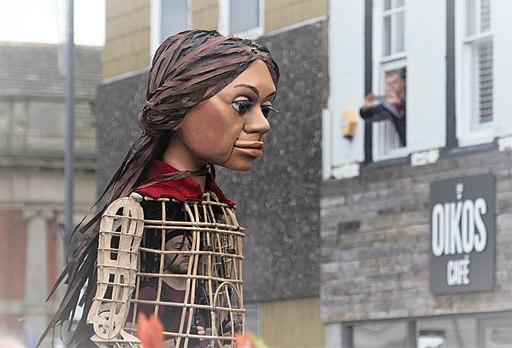
Since July 2021, Amal has travelled through 160 towns and cities across 15 countries, receiving warmth from over two million individuals on the streets and countless more online. Along her journey, 440 unique events, designed to reflect each community’s spirit, were organised through the collaborative efforts of thousands of artists, civil society advocates, and faith leaders. Everywhere Amal goes she is greeted with events that are authentic and meaningful to the local people she meets. This could be a parade through a city, playground games with children, a visit to a temple of worship, an outdoor theatre or dance performance, a musical concert, a whole-city art installation, meetings with children and families, or ceremonies of welcome led by city mayors or other senior civic officials.
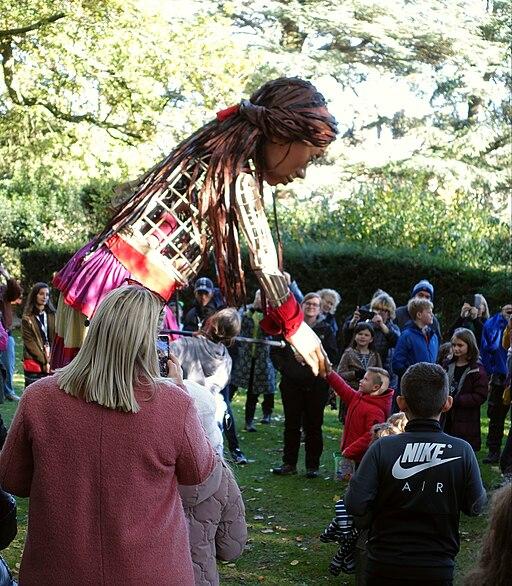
At the heart of The Walk is a simple yet profound question posed to communities along the route: “How will you welcome Amal?” This simple question prompts dialogue and reflection, making individuals think about their attitudes towards refugees and how important it is to be compassionate and empathetic when building inclusive societies. Despite being a symbol of hope, Amal encountered hostility throughout her 8,000 km journey across Europe. From Greece, where far-right protesters threw objects, to France, where objections were raised to her presence, and protests in Athens made it necessary to alter her journey plans. Yet among these challenges, there are many moments of welcome and compassion. Producer David Lan highlights Amal’s role in humanising the marginalised and fostering empathy, despite the challenges along the way. It is important to emphasise that the journey’s objective is not political but humanitarian, aiming to create compassion through artistic expression.
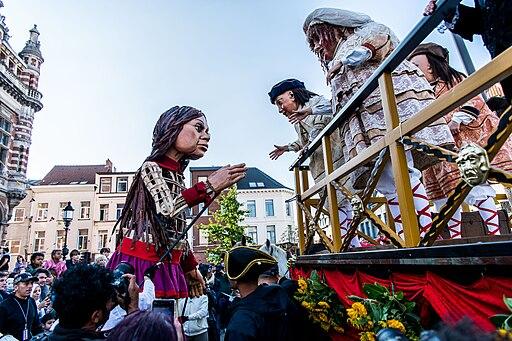
As we follow her journey, Little Amal reminds us of the rich tradition of oral and puppet culture that has long been a significant part of Syrian culture and heritage. Puppetry in Syria dates back to shadow theatre, mentioned in writings as early as the 11th century. During Ottoman rule, folk arts and particularly shadow theatre thrived, with the character of Karakoz evolving to reflect Syrian culture and criticise societal issues. Just as Little Amal represents the hopes and dreams of displaced communities in today’s world, Karakoz embodied the struggles and aspirations of Syrians throughout history. In the 19th century, numerous shadow theatre competitions occurred, primarily held during the holy month of Ramadan. Under French rule, puppeteers played a significant role in resisting colonialism.
In the late 1950s, a puppet theatre nucleus was established in Damascus, which remains the only professional puppetry company in Syria. Traditional shadow theatre has slightly diminished, but efforts are underway to revive it. In the 1950s, after the Syrian-Egyptian union, the Ministry of Culture of the United Arab Republic enlisted three Yugoslav experts led by theatre director Bogo Kokolja to establish a puppet theatre hub in Damascus. The group, under Kokolja’s direction, presented numerous productions, initially accompanied by live piano music. The theatre was subsequently led by various directors including Abdellatif Fathi, Fatima Zein, Salwa al Jabiri, and Adnan Salloum.
The Puppet Theatre of Damascus, the only current professional puppetry-producing company in Syria, shows a variety of local and translated plays using puppets alongside masks and other things. While traditional shadow theatre has nearly vanished, Zaki Cordilo, trained by Abdulrazzaq al Dhahabi, preserves the art with a collection of over 150-year-old puppets. Shadi al-Hallaq is also involved, with support from the Ministry of Culture and UNESCO. Amid political unrest during the “Arab Spring”, puppets became tools of protest.
Shadi experienced the devastation of war, losing almost all of his equipment and becoming a refugee in Lebanon. However Shadi regained his hope again when in 2018 the UN recognised that the traditional Syrian art form urgently needed preservation. UNESCO’s inclusion of Syrian shadow puppetry on its list of intangible heritage emphasised its decline amidst modern entertainment and the displacement caused by war. Al-Hallaq is now back in Damascus, determined to ensure that puppetry survives by teaching other puppeteers, supported by Syrian cultural officials.
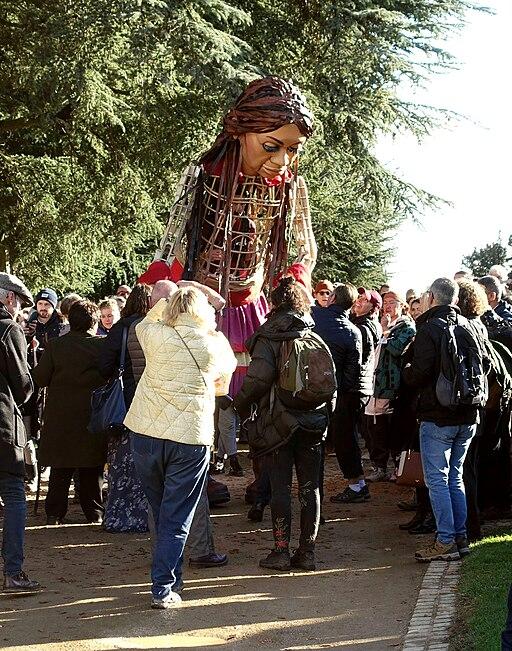
The parallels between Little Amal’s journey and the tradition of puppetry in Syria are striking. Both are a way of storytelling, allowing voices that may otherwise be marginalised to be heard. Just as puppetry has been used to critique or raise awareness, Little Amal’s journey brings awareness to the circumstances of refugees, fostering empathy and understanding across borders. She is a reminder to all of us that we can stand in solidarity with displaced people and create a world where everyone has the opportunity to live in peace and dignity.

